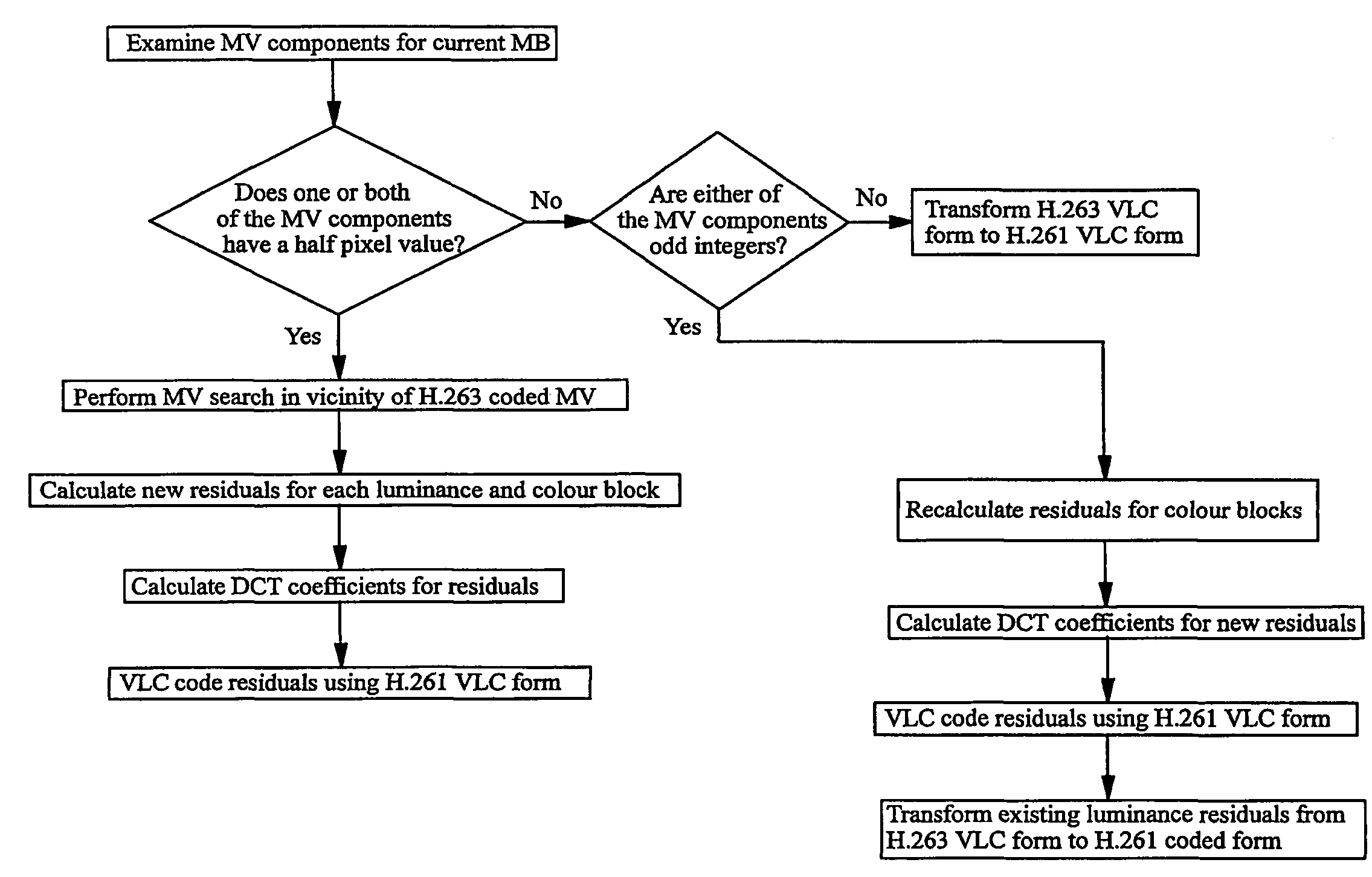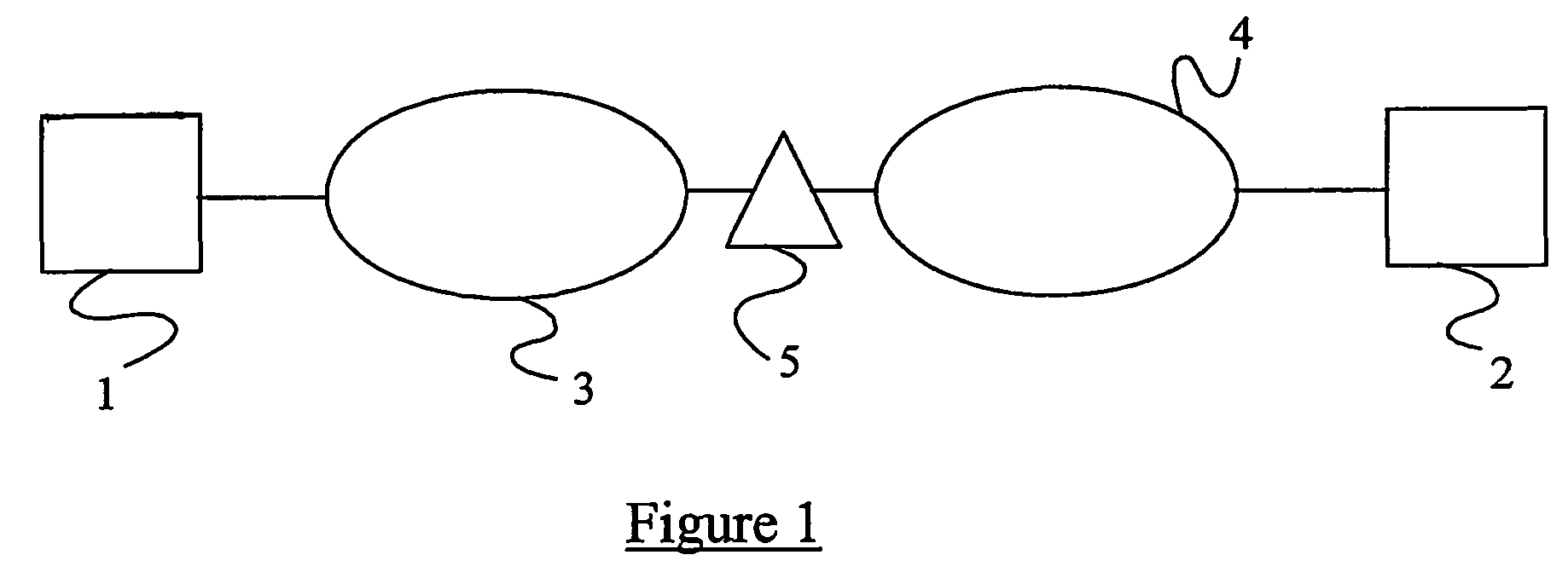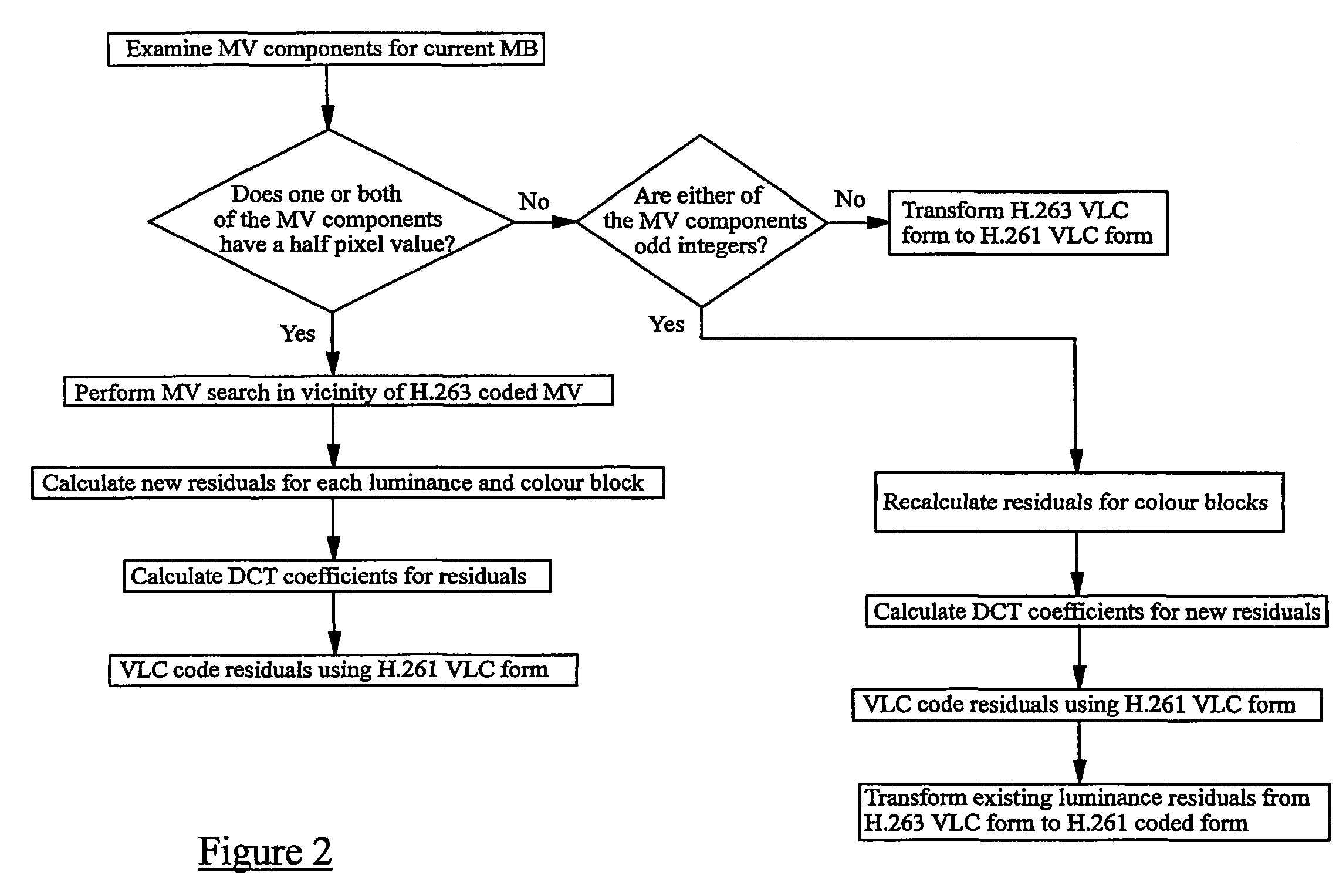Transcoding of video signals
a video signal and transcoding technology, applied in the field of transcoding of video signals, can solve the problems of increasing transmission delay, cost in network hardware, and time-consuming transcoding, and achieve the effect of improving the quality of transcoding
- Summary
- Abstract
- Description
- Claims
- Application Information
AI Technical Summary
Benefits of technology
Problems solved by technology
Method used
Image
Examples
Embodiment Construction
[0037]There is illustrated in FIG. 1 a system for communicating video signals between an ISDN terminal 1 and a 3GPP mobile terminal 2. The ISDN terminal 1 is connected to a Public Switched Telephone Network (PSTN) 3 whilst the mobile terminal 2 is connected to a 3GPP mobile network 4. The PSTN and 3GPP networks are coupled together via an interworking node 5 which, whilst shown separately in FIG. 1, may be located in the PSTN or 3GPP networks or indeed in another network interconnecting the PSTN and 3GPP networks. One of the functions of the interworking node 5 is to perform transcoding of signals between the respective standards used by the ISDN and 3GPP terminals.
[0038]As part of a video “conference” between the two terminals 1, 2, video signals are exchanged. As already mentioned, the ISDN terminal 1 codes video signals generated at that terminal according to the H.261 standard. The ISDN terminal 1 also expects to receive incoming video signals coded using the same standard. On t...
PUM
 Login to View More
Login to View More Abstract
Description
Claims
Application Information
 Login to View More
Login to View More - R&D
- Intellectual Property
- Life Sciences
- Materials
- Tech Scout
- Unparalleled Data Quality
- Higher Quality Content
- 60% Fewer Hallucinations
Browse by: Latest US Patents, China's latest patents, Technical Efficacy Thesaurus, Application Domain, Technology Topic, Popular Technical Reports.
© 2025 PatSnap. All rights reserved.Legal|Privacy policy|Modern Slavery Act Transparency Statement|Sitemap|About US| Contact US: help@patsnap.com



